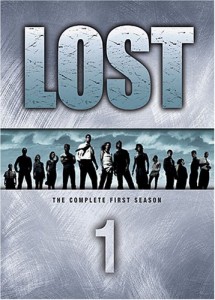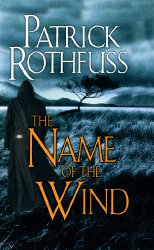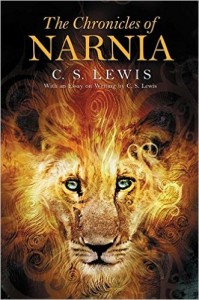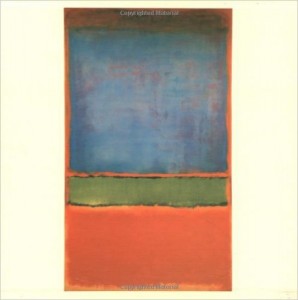 Especially if you do not hold a religious view of the world, art that depends on magic, religion, and spirituality can sometimes lead to eye rolling. Even as an atheist living in a culture steeped in Christianity, I like to keep myself open to the value of introspection and awe. This applies to the beauty of nature, and also to the art we encounter in the world every day.
Especially if you do not hold a religious view of the world, art that depends on magic, religion, and spirituality can sometimes lead to eye rolling. Even as an atheist living in a culture steeped in Christianity, I like to keep myself open to the value of introspection and awe. This applies to the beauty of nature, and also to the art we encounter in the world every day.
Whether in a book, film, television show, music, painting, or other form of art: how does the non-spiritual person navigate art in this society? For me, it is by remembering that art, as is all beauty, is in the eye, heart, and mind of the beholder.
Permit me to give you a few examples, starting with television.
 I enjoyed the show Lost. I loved the characters, I loved how intricate and inexplicable it was. I loved the constant addition of layers through absurd coincidence and the maze of flash-backs, -forwards, and -sideways. As it went further and further into an oddly-articulated spiritual resolution, I found I had to more and more add my own less-spiritual spin in order to keep watching it. This became nearly impossible by the end, which was a real eye-roller. I still enjoy the show, but I had to suspend so much disbelief that I was like an intentional amnesiac mentally blocking the bad when watching it then (and while reflecting on it now).
I enjoyed the show Lost. I loved the characters, I loved how intricate and inexplicable it was. I loved the constant addition of layers through absurd coincidence and the maze of flash-backs, -forwards, and -sideways. As it went further and further into an oddly-articulated spiritual resolution, I found I had to more and more add my own less-spiritual spin in order to keep watching it. This became nearly impossible by the end, which was a real eye-roller. I still enjoy the show, but I had to suspend so much disbelief that I was like an intentional amnesiac mentally blocking the bad when watching it then (and while reflecting on it now).
If an artist (or filmmaker or screenwriter) approaches magic, religion, and spirituality as a construct left to the viewer’s interpretation, then I can tolerate it and even embrace it if it is done well. A good example of this, (and I know some will disagree), is the Battlestar Galactica reboot. I love that show — so dark! The god stuff didn’t get in my way at all because I interpreted it in either of two ways (someday I need to watch it all again and see if I can decide which one of these approaches I like best):

- Either the Cylons created a god in their own image just like mankind did, and thus it is a fiction which is merely a sociological curiosity of the Cylon society and so it doesn’t ruin the story for me: I can interpret the ending however I want knowing it is anything but a real god.
- Or there was a master puppeteer-Cylon who orchestrated everything behind the scenes, and he/she/it ensured devotion to the plan by programming the other Cylons with the “god” metaphor just to keep the master plan on track. (However in the very, very last scene I like to think that the two Cylons speaking know full well that it’s not actually a god.)
This is my own spin that allows me to continue adoring the show. A Christian or other god-focused person would apply his own spin, allowing him to fervently love the show as it demonstrates his god’s love as the master control behind the universe. To each his own.
 Another presentation of this is when the spirituality, religion, or magic is done is such a way that it makes perfect sense in the universe in which the art takes place. An exceptional example of this is the masterfully written Kingkiller Chronicle series by Patrick Rothfuss (which is high up on my list of the best fiction ever written — here are all my fiction recommendations). In this series, magic is a major part of the universe, but it exists in a way that makes almost complete sense in the story–much as explaining physics to someone many hundreds of years ago would be like describing magic. (This series also is an example of how the exceptional quality of the writing is so astounding that I would forgive this author pretty much anything in exchange for the sheer joy of reading his words.)
Another presentation of this is when the spirituality, religion, or magic is done is such a way that it makes perfect sense in the universe in which the art takes place. An exceptional example of this is the masterfully written Kingkiller Chronicle series by Patrick Rothfuss (which is high up on my list of the best fiction ever written — here are all my fiction recommendations). In this series, magic is a major part of the universe, but it exists in a way that makes almost complete sense in the story–much as explaining physics to someone many hundreds of years ago would be like describing magic. (This series also is an example of how the exceptional quality of the writing is so astounding that I would forgive this author pretty much anything in exchange for the sheer joy of reading his words.)
But if the creator of the work approaches the spirituality, religion, or magic as a rigid, real thing without providing a way in which it could really exist in that world, then I cry fowl and roll my eyes (or turn it off or put it down). If it is circumstantial to the plot of an otherwise great show then I can still love the film while hating that one aspect of it, but if it permeates everything then it might ruin it for me.
 This is a good place to cite the Chronicles of Narnia as an exception. This set of seven books is a blatant and intentional allegory for Christianity. But the series is saved for me in the last book of the series where Lewis takes pains to point out that all the world’s gods are regional (religional?) flavors of one god. It’s still religion — but it is non-dogmatic theism rather than Christianity or some other rigid belief, and I can respect that. Besides, in addition to admiring C.S.Lewis, I was obsessed with these books when I was a child so it will always hold a spot in my heart, even if I might roll my eyes sometimes. (This points to exceptions we must make for other children’s stories of magic, such as the Harry Potter series.)
This is a good place to cite the Chronicles of Narnia as an exception. This set of seven books is a blatant and intentional allegory for Christianity. But the series is saved for me in the last book of the series where Lewis takes pains to point out that all the world’s gods are regional (religional?) flavors of one god. It’s still religion — but it is non-dogmatic theism rather than Christianity or some other rigid belief, and I can respect that. Besides, in addition to admiring C.S.Lewis, I was obsessed with these books when I was a child so it will always hold a spot in my heart, even if I might roll my eyes sometimes. (This points to exceptions we must make for other children’s stories of magic, such as the Harry Potter series.)
You are part of the art
The point is, you interpret art in a way that makes sense to you. A good artist understands that the attitudes and reality that you, the viewer, bring to the work is part of the end result. So he will create the art to provide a framework, leaving room for it to be filled in and rounded out with your interpretation.
This is my approach to music and art (and life?) in general, and incidentally this is something that is a prominent theory in modern art: You create a space for art and let the viewer/listener/reader complete the work by adding his own interpretation.
 One of many great examples of this are the iconic paintings by Mark Rothko. If you look at it within the framework of “This is art — what is it a picture of? What has the artist depicted?” then you won’t get much from it, and might even get only an eye-roll and a derisive snort.
One of many great examples of this are the iconic paintings by Mark Rothko. If you look at it within the framework of “This is art — what is it a picture of? What has the artist depicted?” then you won’t get much from it, and might even get only an eye-roll and a derisive snort.
But if you look at it and say “This is art — where is its beauty? What am I associating with it and how is that influencing how I see it? What does it mean to me?” then you can get a lot from it and appreciate it. This is art which creates a space for the viewer to turn it into whatever the viewer wants to. You haven’t passively viewed it and just taken what the artist spoon-fed to you, you have participated with it to come up with what you think it is.
 Of course there is a difference between this type of art executed by a talented artist, and the mere scribblings of imitators. Is there anything more inherently, intuitively beautiful than a simple Fibonacci spiral? When visual art is pared down to mere colors or curves or lines, the need for perfection of each element is that much more weighty. But that’s for another discussion.
Of course there is a difference between this type of art executed by a talented artist, and the mere scribblings of imitators. Is there anything more inherently, intuitively beautiful than a simple Fibonacci spiral? When visual art is pared down to mere colors or curves or lines, the need for perfection of each element is that much more weighty. But that’s for another discussion.